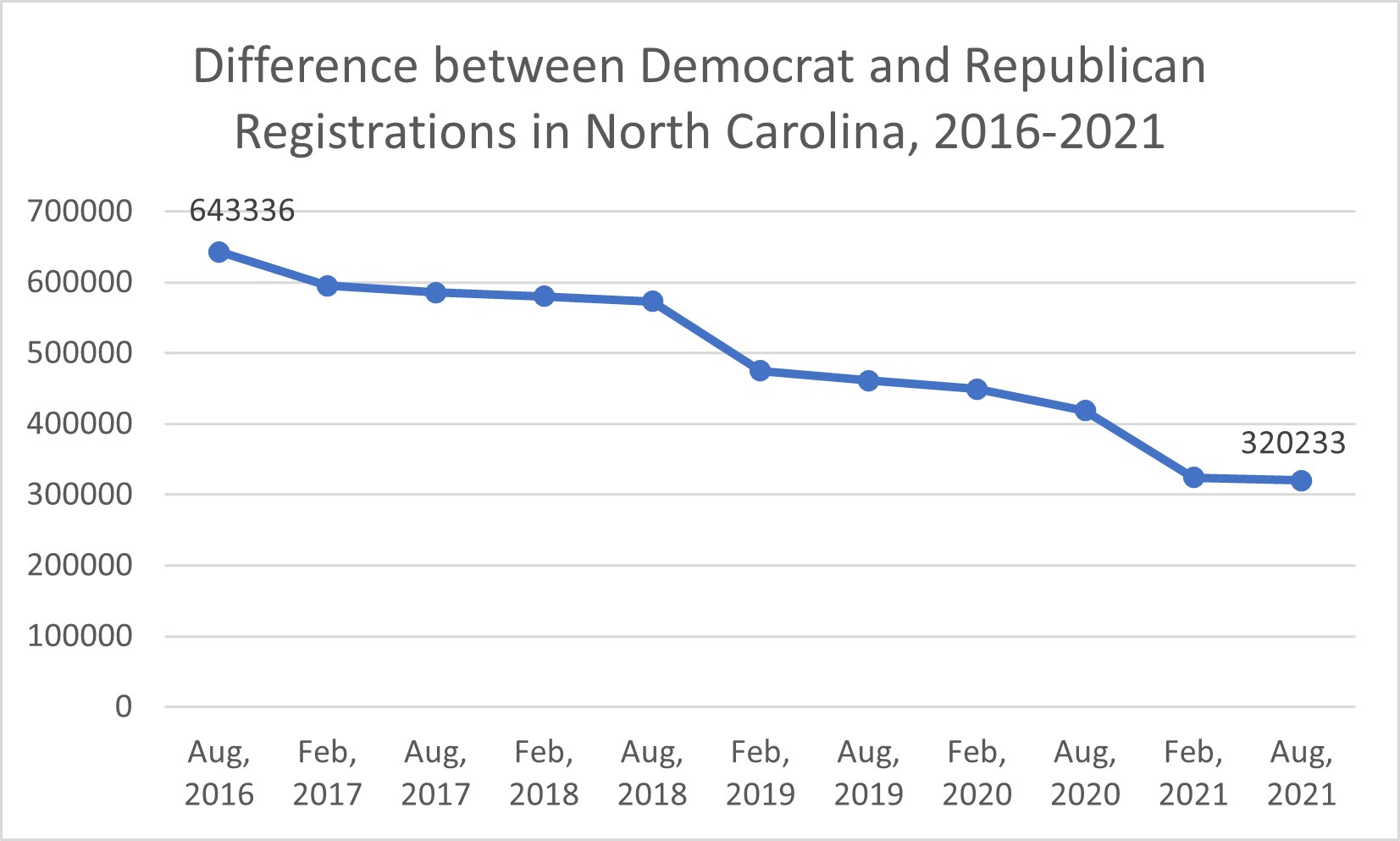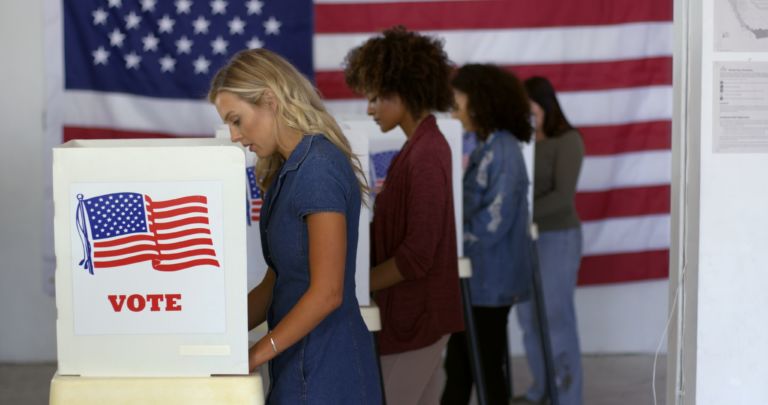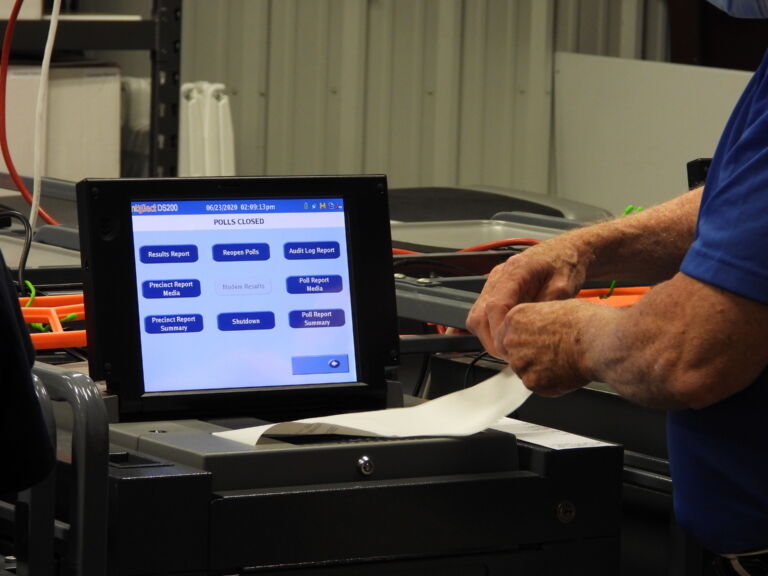Much has been made of the rise of the unaffiliated voter in North Carolina. Based on what I have seen on the John Locke Foundation’s Voter Registration Changes webpage, I project that unaffiliated voters will likely surpass Democrats to become the largest group of voters before the 2022 general election.
However, Democrats are also on pace to being the third-largest Party affiliation in North Carolina within half a decade. As can be seen in the figure below, there are currently 320,233 more registered Democrats than Republicans in North Carolina. That is less than half the difference in registrations between the parties five years ago. If this pace of change holds, then Republicans will overtake Democrats sometime in 2026.

As can be seen in the chart, while there is a continuous drop in the number of Democrats relative to Republicans over the past five years, there are larger drops in the periods ending in February of 2017, 2019, and 2021. That is due to biennial list maintenance that boards of elections before around January of each odd-numbered year. Such list maintenance is a lagging indicator of the relative voting strength of the parties because registrations removed through list maintenance belong to people who have not voted for several years.
The usual caveats apply: the rate of registration change between the parties could accelerate, decelerate, or even reverse. For example, the 323,103 shift in favor of Republicans from August 2016 to August 2021 represents an acceleration from the 136,802 voter registration shift in favor of Republicans from August 2011 to August 2016.
A final note about those unaffiliated voters: a 2020 report by Carolina Demography found that unaffiliated voters tend to be younger and are more likely to be white than are voters who are registered party members.


